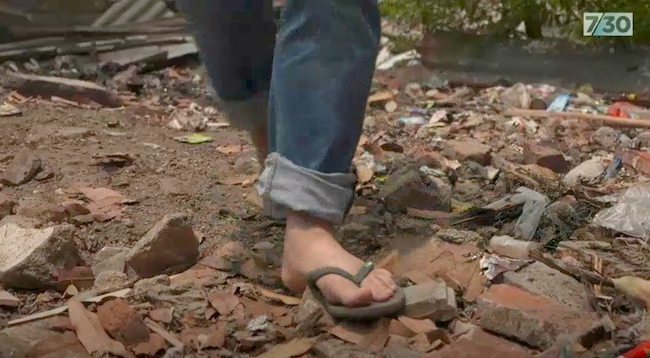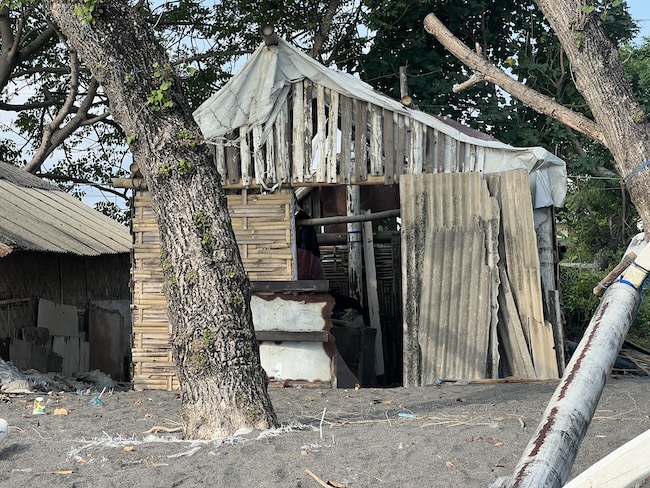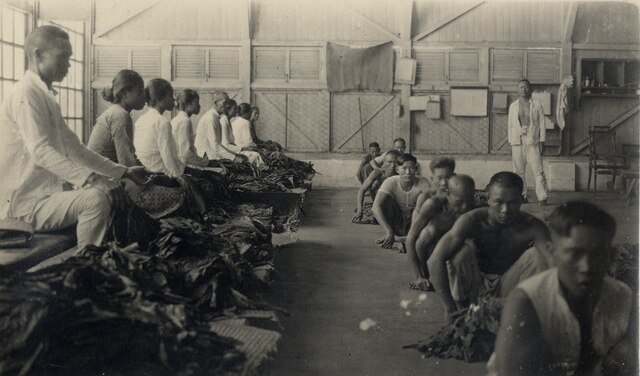What can be done to prevent suffering in Indonesia?
Gwyn Roberts
For many Australians, the mere mention of asbestos is enough to evoke images of tragedy and suffering. In the early 1900s it was a common material in homes, furnishings, and machinery. Houses built in the 1940s-1960s were predominantly constructed with asbestos roofing, where fibres were mixed with cement to give it its shape. Because of its durability, affordability and insulative properties, usage was widespread in the first half of the 20th century. Research in the late 1960s found that exposure to the dust resulted in health issues. It wasn’t until the 1970s that there was any awareness of asbestos-related diseases such as mesothelioma or asbestosis (cancer and lung scarring respectively), both of which can cause severe respiratory distress and death.
Usage and mining then declined in the 1980s when health risks began to be taken seriously. This is when manufacturers such as James Hardie were found liable for negligence in various landmark cases. Today in Australia the use of asbestos in any capacity has been banned since 2003. The Federal Government’s Asbestos and Silica Safety and Eradication Agency coordinates national efforts to manage and eliminate any risk under the National Strategic Plan. Removing the remaining material in older buildings is treated with utmost caution and in most cases can only be conducted by licensed professionals.
The early history of asbestos utilisation in Indonesia is very similar to that of Australia. However, the trajectories diverged in the 1980s, when the rising global awareness for related health risks failed to diminish the industry. Today Indonesia is the world’s second largest importer. Asbestos manufacturing occurs nation-wide, and there exists no outright prohibition on usage.
Since the late 2000s Indonesia has seen advocacy on this issue from various activist and health groups such as INA-BAN and members of its Solidarity Network, and recently these groups have been gaining major traction. In March 2024 the Supreme Court granted a petition so that it is now obligatory for all asbestos-containing products sold in country to display health warning labels.
Despite this, it is expected that dangers will only increase. Usage of the mineral is extremely common, especially in the form of roofing (comprising approximately 90 per cent of asbestos manufacturing). 50 per cent of the buildings in Jakarta are estimated to contain white asbestos, whereas across the country the rate is thought to be 10 per cent. And usage will likely escalate as industrial lobbyists attempt to expand the market. These factors combined have led international bodies such as the World Health Organisation to warn of an impending ‘epidemic’ of asbestos-related diseases.
Lombok
Located to the east of Bali, Lombok has recently been identified as a location of particular concern. Following the height of the pandemic, Lombok has reopened for tourism. The island is now a rapidly growing investment hotspot and boasts idyllic beaches with clear blue water and a picturesque green mountain backdrop. It’s a sensational destination with snorkelling, paragliding, surfing, impressive waterfalls, and a multitude of hikes. But beyond the typical tourist destinations, the presence of asbestos has attracted scrutiny. In 2018 an earthquake destroyed hundreds of thousands of Lombok homes, many containing asbestos.

According to a video from the ABC news program 7.30, titled ‘Asbestos posing a threat to tourists and locals in Lombok’ (4/7/2023), instead of treating the debris as a hazard and dealing appropriately with the ruins, bulldozers cleared the sites, crushing the asbestos and spreading the needle-like fibres. Broken sheets can still be seen right across the island, with children sometimes playing among the fragments and contaminated dust. As I discussed this issue with several adult Lombok inhabitants, they too described how, as children, they would play with fragments of asbestos roofing, breaking it up into smaller pieces.
It appears as though Lombok is lacking in awareness. Doctors aren’t trained to recognise related diseases and most of the general population are not aware of the risks. The first official case of asbestos-related lung cancer or mesothelioma in Indonesia was only confirmed in 2019. In minor cases, some awareness has existed for some time. While driving down the coast from Mataram to Desert Point (a world-famous surf break), I had the opportunity to discuss this topic with a scientific officer from the University of Western Australia, who was originally from Lombok. She mentioned to me how she had advised her father against using asbestos when constructing a pergola near the family house in the early 2000s. However, such examples are extremely rare and, in this case, were the result of extensive study of soil and rock minerals.
Already there are estimated to be 1,661 victim deaths per year in Indonesia, and hundreds of others could have contracted non-malignant forms of the disease. Yet the national government has stated that while it’s aware of the danger, it is up to the building industry to take the initiative. But the industry seems to be supported by lobbyists like the Chrysotile Information Centre (CIC) who spread misinformation, such as insisting that white asbestos (the most common form) is a safe product. They claim it dissolves in the lungs within two weeks and doesn’t harm human health. Despite this, the independent consensus from the World Health Organisation is that ‘exposure to asbestos, including chrysotile, causes cancer of the lung, larynx and ovary, mesothelioma … and asbestosis’.
What can be done?
The most desirable action is a national ban, as recommended by the World Health Organisation. Asbestos remains popular because it’s cheap and readily available. However, Vietnam has demonstrated that change is possible after working towards its commitment to an outright ban. In the last few years, the industry there has decreased by 66 per cent and cheap alternatives have been found. Like Vietnam, this shift is viable in Indonesia as no asbestos is mined in-country; all new asbestos is imported (predominantly from Russia). In the meantime, a ban could be implemented at a local level. In the city of Bandung, asbestos is prohibited in new commercial or private builds (as per a 2018 regional regulation).

Another consideration is that consumers could diminish the presence of asbestos by opting for metal, plastic or clay alternatives. It seems like a large part of the problem is that the danger of asbestos is not common knowledge. According to Dr Anna Suraya, from the Occupational Doctors Association of Indonesia, people don’t think asbestos is dangerous because the authorities let them use it. One of my language study teachers in Mataram remarked that she was living in a house with a degrading asbestos roof; she had no idea that exposure could be dangerous. Consequently, awareness raising is necessary through public campaigns, continued publishing of information, grassroots activism, further research and cross-institutional collaboration.
Increased local expertise and education are also needed. Medical knowledge of asbestos-related diseases should become a normal part of training so that early diagnosis, treatment, and rehabilitation services are improved. Builders and disposal groups should be trained in safe asbestos handling. Where contamination sites already exist, proper efforts should be taken to diminish exposure e.g. replacing asbestos where possible, laying down new soil, collecting and disposing of broken fragments.
In 2021 the United Nations Human Rights Council (UNHRC) unanimously recognised that a clean, healthy, and sustainable environment is a human right. And in 2022 the General Assembly (UNGA) followed suit. If further developments are not made, there is no guarantee of a safe and healthy environment for the citizens of Indonesia when it comes to asbestos. But as developments are made and activist organisations continue their work, there is still reason to be optimistic.
Gwyn Roberts (gwyn.roberts04@gmail.com) is a student of Laws and International Studies at Deakin University.











